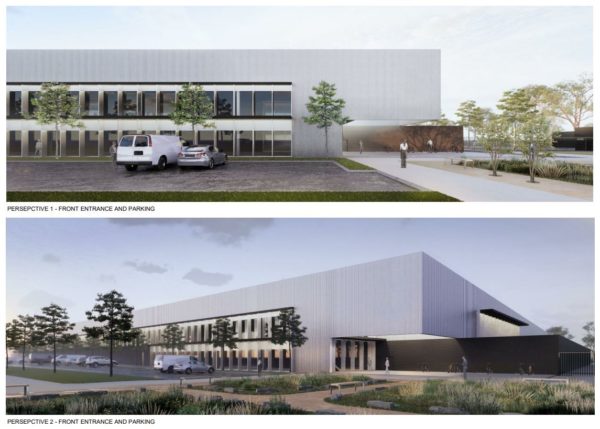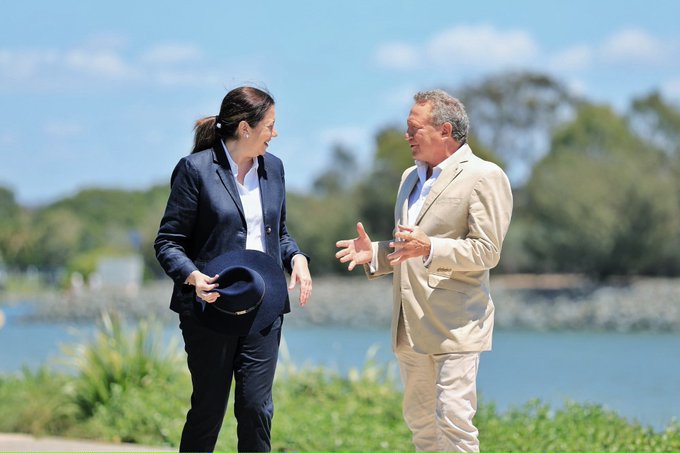Founder of Fortescue Metals Group (FMG) and more recently of Fortescue Future Industries (FFI), Dr Andrew Forrest yesterday made a joint announcement with Queensland Premier Annastacia Palaszczuk in the Port of Gladstone, that FFI will build the world’s largest green-energy infrastructure and equipment-manufacturing facility in Central Queensland.
FFI will invest $115 million in the first step of a more than $1 billion operation that will double the world’s green hydrogen-production ability.
With the first electrolysers rolling off the production line by 2023 it will soon produce 2 GW of electrolyser capacity per annum.
Forrest constantly communicates the urgency of ramping up green energy production: “We will not allow the world to keep on cooking — we will not allow our children to inherit a much less stable environment,” he said on Sunday with now familiar fervour.
We're working with Andrew 'Twiggy' Forrest to build the world's largest hydrogen-equipment manufacturing facility 🙌 pic.twitter.com/wQXWt8Lnr1
— Annastacia Palaszczuk (@a_palaszczuk) October 10, 2021
A rolling tide of FFI green-hydrogen-enabling announcements
Only two weeks ago, Forrest formed a global green hydrogen organisation, GH2, to be chaired by former Australian Prime Minister Malcolm Turnbull, with the goal of ensuring that by 2050, a quarter of the world’s energy comes from green hydrogen.
FFI itself aims to produce 15 million tonnes of green hydrogen a year by 2030, much of which it intends to integrate into the production processes of heavy industry, such as steel making, to displace fossil fuel use.
Just last week, the billionaire known as “Twiggy”, and Julie Shuttleworth, Chief Executive of FFI — a subsidiary of FMG — announced FFI had acquired a majority share in Netherlands-based High yield Energy Technologies (HyET) Group, which counts among its assets the solar PV module manufacturer HyET Solar.
FFI’s plans to expand the group’s solar manufacturing capability include a 1 GW manufacturing plant in Australia producing HyET lightweight Powerfoil flexible solar modules destined for utility-scale solar farms and building-integrated PV applications.
FFI will also support HyET’s intention to ramp up to 900 MW production in the Netherlands
By manufacturing the flexible solar modules and electrolysers at immense scale, FFI aims to drive down the cost of both products and hasten the delivery of affordable green energy to the world.
Smashing the cost of hydrogen with scale
The current cost of electrolysers is one factor keeping the price of producing green hydrogen above that of hydrogen produced using natural gas.
Electrolysers split water into its component hydrogen and oxygen molecules; when powered by renewables such as solar and wind, they produce emissions-free hydrogen that can be used to transition otherwise hard-to-abate industrial processes away from fossil fuels.
Cheap hydrogen, produced by excess renewable electricity justifies further processing into ammonia or compression for export.
The International Energy Agency identified shortages in worldwide electrolyser manufacturing capacity, which it calculated at 3 GW a year in 2020, as a threat to the many green hydrogen projects in the global pipeline.
Last year, Europe dominated worldwide capacity with about 60% of electrolyser production, and China pretty much controlled the rest, with 35%.
Queensland, the natural home of green hydrogen
“FFI’s goal is to become the world’s leading, integrated, fully renewable energy and green products company, powering the Australian economy and creating jobs for Australia as we transition away from fossil fuels,” Shuttleworth said.
Forrest added that the Queensland facility “is a critical step in Fortescue’s transition from a highly successful pure-play iron ore producer to an even more successful green renewables and resources powerhouse.”
The Queensland plant, to be built in Aldoga, 25 kilometres west of Gladstone, will manufacture not only electrolysers, but cabling and wind turbines to drive production of green hydrogen for global markets.

Image: Fortescue Future Industries
Forrest said that over the past 15 months he had researched 62 countries to decide on the best location for producing his envisaged full hydrogen kit, and found, “Queensland has the beautiful combination of wind and solar and you have a hard-working, educated people,” he said at yesterday’s event. He also lauded the Queensland Government for already steering the state “into a green hydrogen future”.
Gladstone’s industrial port is well-positioned to take Australian-made electrolysers to the world. Palaszczuk noted its proximity to Asia and Queensland’s already good trading relationships with Asian economies.
In 2019, Queensland exported its first shipment of green hydrogen to Japan as part of a trial jointly conducted by the Queensland University of Technology and JXTG, a Japanese petroleum conglomerate.
Queensland has since announced several hydrogen projects on its sun-drenched turf, but nothing like this.
The FFI manufacturing facility is expected to directly create some 150 jobs during construction and 53 ongoing jobs when operational, but Forrest said the knock-on effects of imminently available, affordable green hydrogen generation will bring manufacturing “roaring back to regional Australia”, creating thousands of jobs.
This content is protected by copyright and may not be reused. If you want to cooperate with us and would like to reuse some of our content, please contact: editors@pv-magazine.com.









3 comments
By submitting this form you agree to pv magazine using your data for the purposes of publishing your comment.
Your personal data will only be disclosed or otherwise transmitted to third parties for the purposes of spam filtering or if this is necessary for technical maintenance of the website. Any other transfer to third parties will not take place unless this is justified on the basis of applicable data protection regulations or if pv magazine is legally obliged to do so.
You may revoke this consent at any time with effect for the future, in which case your personal data will be deleted immediately. Otherwise, your data will be deleted if pv magazine has processed your request or the purpose of data storage is fulfilled.
Further information on data privacy can be found in our Data Protection Policy.